4 December, 2001
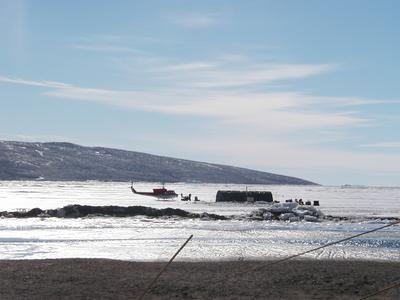
We can always hear the helicopter before we see it coming over the mountains. The helicopter landed near the dive hut to drop off supplies.
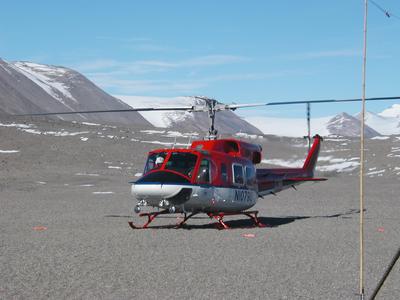
When the helicopter landed next to the Jamesway hut, communication was made with a hand-held radio. The pilot must grant permission before anyone can approach the aircraft. The most dangerous time to approach a helicopter is when the blades are winding down to a stopped position. As the blades slow down, they begin to dip closer to the ground.
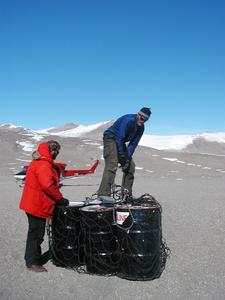
We spread out a black cargo net, then rolled several 55-gallon barrels on the net. Some of the barrels were placed inside the helicopter, but the ones in the sling would be attached and flown outside the helicopter. Kevin Raymond, the helo tech, is netting the barrels before he attaches it to the underside of the helicopter. (For more information about helicopters in Antarctica: See journal entry, Dec.10).
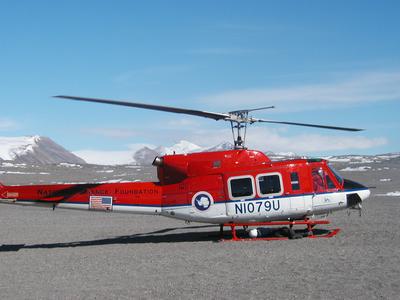
If you look carefully, you will see Kevin (in the white helmet) hooking the cable attached to the netted barrels to the underside of the helicopter.
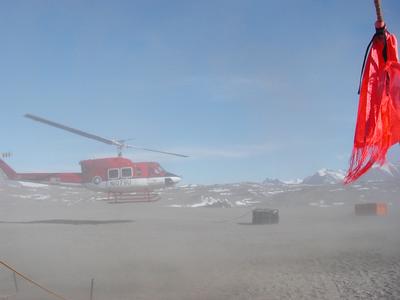
Dust was flying all around the helicopter as the barrels were being lifted into the air.

The helicopter hovers in the air above the netted cargo before it takes off with its load. The helicopters and radios are our link with McMurdo. We depend on helicopters for our main source of transportation, as well as to bring supplies, drinking water, mail, and equipment to and from our field camp. We appreciate the wonderful crew at "helo ops" and for providing this link back to civilization.
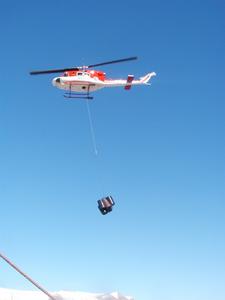
The helicopter flew off with its cargo load. The barrels of waste water (from dishes, washing hands, etc.) and empty fuel barrels will be returned to McMurdo. All waste will be retrograded back to the States when the freighter comes in mid-January.

After the helicopter left, I went out to chip ice, then I continued to sort forams (See journal entry: Nov. 20). Dr. Bowser showed me how to take a sediment core before sending me out to collect a small sample from the different hydrology sites in the marsh-like area near the moat. Since the tide was out, it proved to be quite easy to take a sediment core from Site B. Although, I couldn't take water measurements at this site with the tide out; it allows me to observe the streambed.
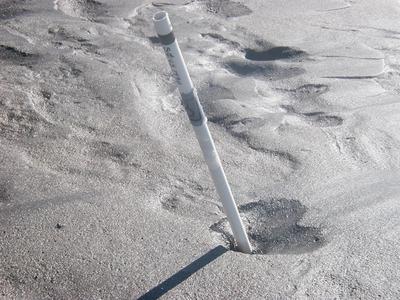
I've come to realize that in "doing" Science many factors may affect the outcome, or prevent us from getting the needed data as scheduled. The tide took the water from Site B, which was great for the sediment coring, but prevented data collecting.

Site C is also affected by the tide. When I first arrived in Explorers Cove, the moat area was completely frozen to ground level. The ground cover had large patches of lace-like ice spread out in patterns surrounding the moat. After the second week, I could break through the ice to get the water temperature and pH. I chose three sites to collect data. I put stakes near the water's edge so that I wouldn't disturb any algae or organic life living in the area. Over time, the tides changed how much water came into and out of the area. While this affected my data collecting (during the short intervals when the water flooded the area or dried up the area), it only added to my interest and the questions about the organisms being affected by the changes. The erosion taking place along the stream bed and the nutrients being washed back into the sea only added to the "What if" and "Why" questions that these observations sparked.
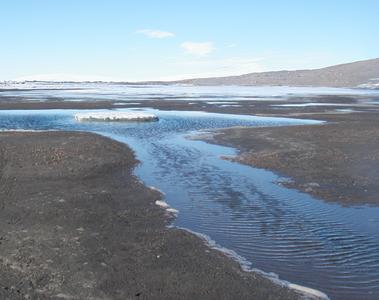
Nutrients being washed back into the sea
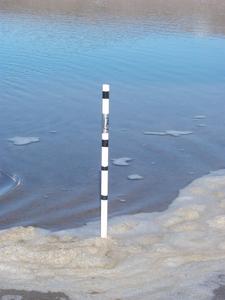
When I checked Site A, a lot of foam (possibly from the organic material in the water) had collected around the stake. The foam acted as insulation for the warmer water beneath the foam.
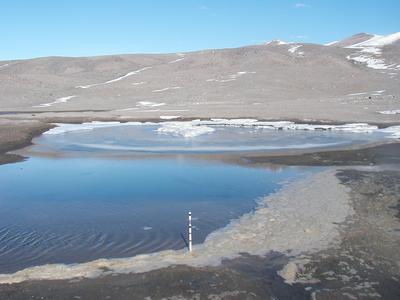
The wonder of science begins with first becoming aware of changes taking place. My goal as a teacher is to help students do more than just look, but to develop the ability to make good observations. It is through observing that students learn to ask questions that lead to higher learning skills, such as analyzing and processing what they are learning. For me, the data wasn't just for the science, but rather became the catalyst in reinforcing that students need to be taught to make observations, learn to ask thought-provoking questions, and develop thinking skills beyond the textbooks. Dr. Pawlowski left me with the message that textbooks give us the background information, but our questions should lead us to make discoveries. Science is about making discoveries. It is constantly changing, and one answer only leads to more questions. Yes, science is a wonder! It makes me realize that I am not only a teacher, but throughout my lifetime, I will always be a student.
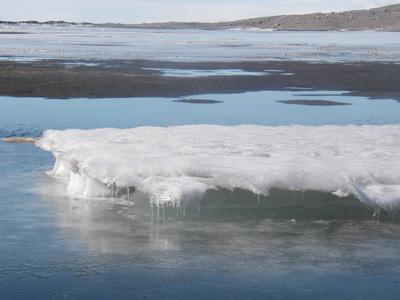
By taking time to observe the science, I was also drawn to the beauty, which has given me a greater appreciation for the environment.
Contact the TEA in the field at
.
If you cannot connect through your browser, copy the
TEA's e-mail address in the "To:" line of
your favorite e-mail package.
|
